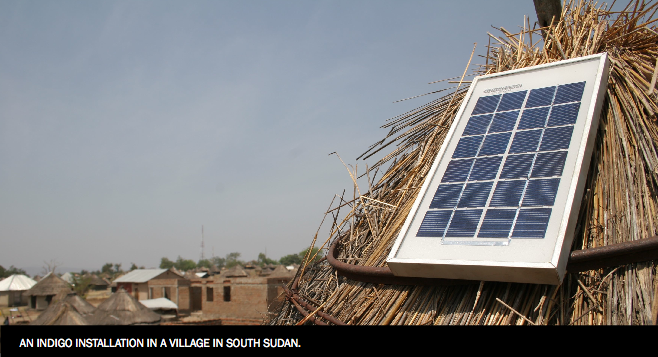Cheap Pay-As-You Go Solar for Developing Countries

When you switch on a light- you have power! Quite literally. The power to connect, to use modern technology, listen to music, run advance cooking appliances. But the same power also ends itself to some very basic needs like plain and simple light – to read, study, cook. More than half a billion in Africa lack grid power and spend more on fuel than most developed nations in terms of salary percentages. The issue with renewables: upfront costs that the poor cannot afford and Eight19 is solving this problem through an innovative pay-as-you-go solar.
Eight minutes and nineteen seconds is how much time it takes for sunlight to reach the earth. This is the explanation for the unusual name behind Eight19- a consumer electronics company behind products like IndiGo. IndiGo is an affordable solar lighting and battery charging system that brings low-cost energy to off-grid communities.
This pay-as-you-go model makes it a uniquely affordable way to bring power for low-energy (LED) lighting and battery charging to homes, schools and workplaces in emerging markets.
Why Pay-As-You-Go Solar is Relevant in Developing markets?
Renewable energy installations come with an upfront cost that poor communities in Africa and Asia cannot afford. People spend the little that they earn immediately with no real savings, throwing them into a vicious circle of using dirty fuels like kerosene that are costly, inefficient and hazardous to health. Eight19 breaks these barriers to clean energy via this simple solar battery pack that customers can pay as they use. Eight-19′s CEO Simon Bransfield Garth explains,
”..so in Kenya, for instance, we charge about $1.40 (120 shillings) for a week’s use of the system and users tell us they save around $2-3 on kerosene and a further probably $1.50 on what they would have to pay someone to charge up their mobile phone so on a week by week basis so people are getting the solar but actually saving money at the same time.”
How Does Pay-As-You Go Solar Work?
With IndiGo, users put credit on their solar cell, just as they would on a mobile phone. Power from the cell then charges the battery in the IndiGo box, making electricity available for lighting or charging other devices, such as mobile phones.
Each IndiGo battery pack or power unit has a unique serial number. To add credit to the unit, the user purchases a scratch card for a period of time such as a day, a week or a month. This scratchcard number, along with the unit serial number, is sent by SMS text message to the IndiGo server which validates the number and sends back a unique passcode. The user enters this passcode into the unit and the output is enabled for the period of the credit.
You can return to the main Market News page, or press the Back button on your browser.

